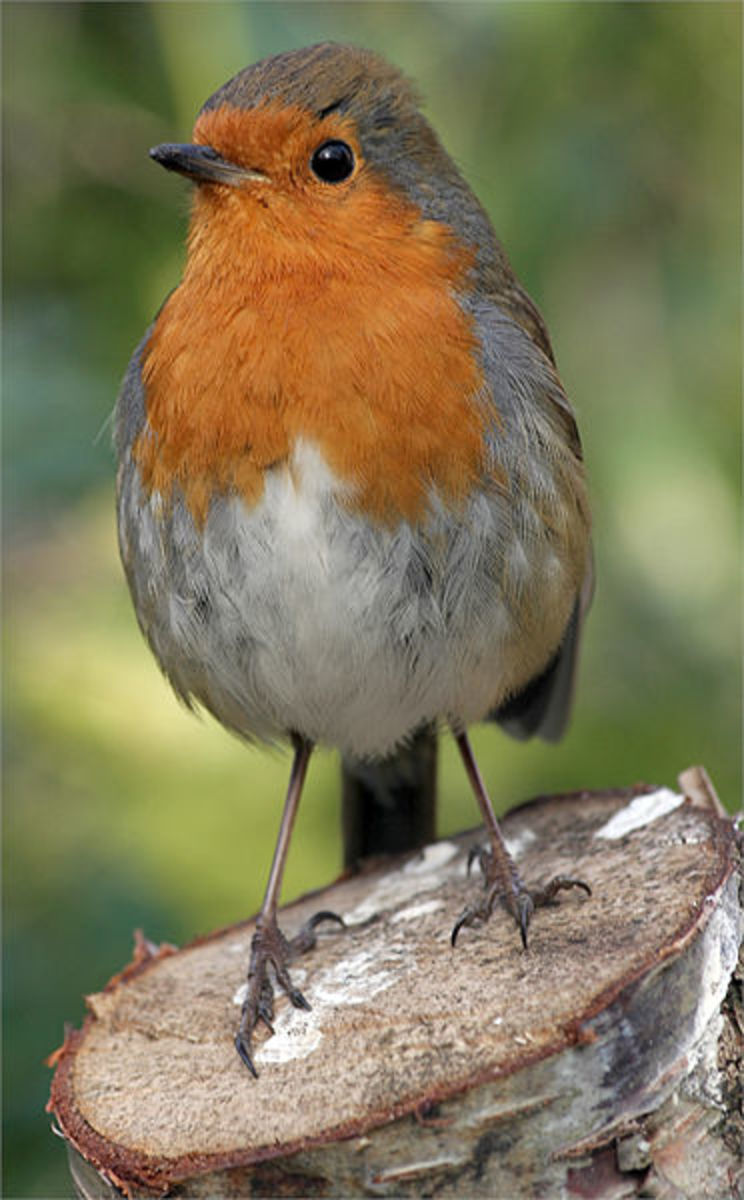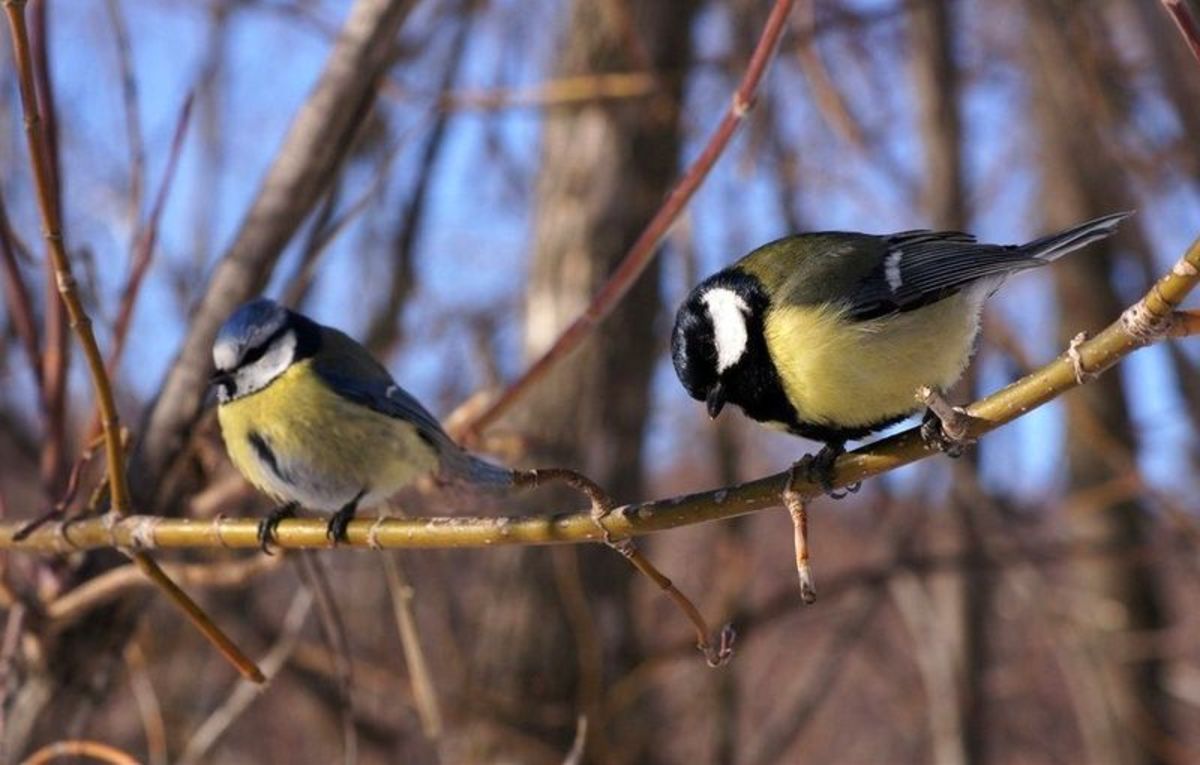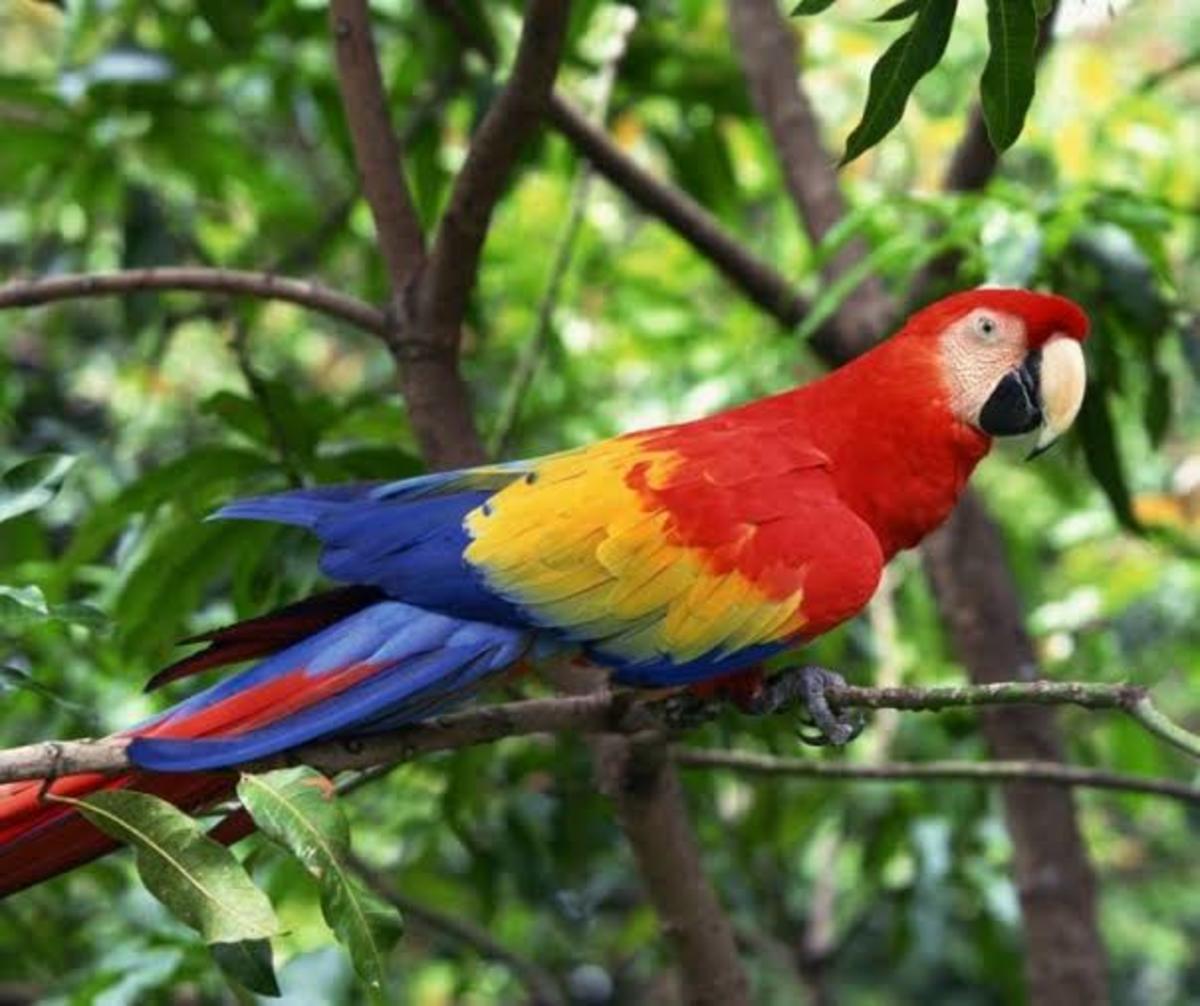European Robin - Popular Garden Bird
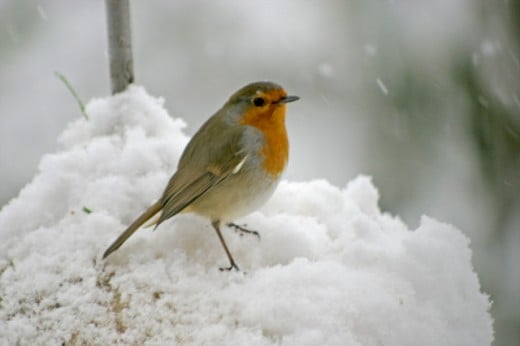
Why Do We Love Robins?
Even if you think that you don’t know anything about garden birds, I bet that you would be able to recognise and name a robin if you saw one. They are very distinctive little birds, with their brown feathers, bright, beady eyes and deep red breasts.
They are one of our most loved garden birds, as they seem to be happy to be around people, keeping gardener’s company while they work hoping that a juicy worm or two will be unearthed while they are digging and, if you feed them the birds in your garden, often noisily demanding food.
Where I used to live, I used to feed the birds regularly, and if I missed the usual time, the robin would come and sit on the windowsill, fluff out all his feathers indignantly and scold until the required nuts and crumbs were provided.
We also tend think about them being associated with the Christmas season and cold snowy weather, and there are many robins on Christmas illustrations, Christmas ornaments and Christmas cards that you can get to decorate your home for the Festive Season.
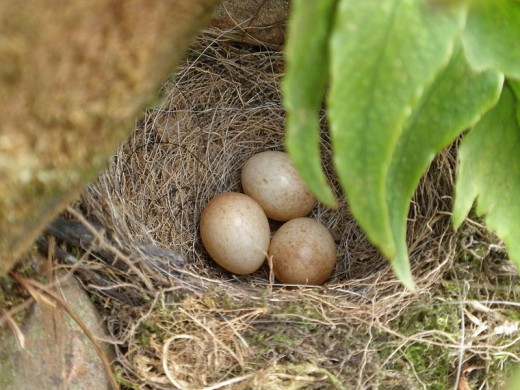
What Are Robins?
So what do we know about these cheerful little birds with the bright red breasts that we see hopping and flying around our gardens?Well they are also known by the Latin name of erithacus rubecula and also as the European robin, and both the male and female look very similar, with the same body shape and bright scarlet breast feathers.
The youngsters do look a little different, as they are missing the distinctive red breast feathers and have golden brown spots instead.They pair up for the breeding season, and will usually start mating around March, or earlier if the weather has been particularly mild.
They build their nests close to the ground, and hide them away in any hidden spot or cranny that they can find.Robins have even been known to nest in such unusual places as under car bonnets or in buckets and kettles that have been left out in a garden or allotment.
The nest is built by the female and she carefully constructs it from dead leaves, moss and plant material and lines it with hair. During this important time, the male is doing his bit by providing his mate with food, which helps her to maintain enough weight to lay a clutch of between four to six eggs, laying one egg a day in the early morning.
Try not to disturb the robins while they are nest building and incubating, as they can be scared off and will abandon their nest if they feel it is vulnerable. The eggs have a white, creamy background speckled with reddish brown spots, which take around a fortnight to incubate. Incubating the eggs is wholly the responsibility of the female; the cock robin rides shotgun by flying around their territory repelling invaders and scaring off predators, and finding food for his mate.
The chicks are fledged in a couple of weeks and generally stay with the parent birds being cared for, usually by the male robin, for around another three weeks until they fly the nest for good. They generally raise two broods of chicks in a breeding season, but if the conditions are good they can produce three and even four broods is not unheard of.
Here in the UK, robins stay in our gardens all the year round and do not migrate. They are territorial little birds, who will vigorously defend their nests and their patch of the garden against invasion from other robins.
However, they don’t seem to be as concerned by the other garden birds, and because they have a very strong parenting instinct, have even been known to feed the chicks of other birds such as blackbirds, willow warblers and thrushes. As well as in gardens, robins can be seen in woodland, parks and hedgerows all around the UK, and their favoured foods are worms, insects, seeds, nuts and fruit.
Robin Myths and Legends
As they are such popular birds, they inevitably have some old wives tales and legends surrounding them. Some of these legends are about how the robins attained their distinctive red breasts. One of the stories is that to help mankind, a robin flew down from the heavens carrying a glowing ember to give people the light and warmth of fire. During the flight it burned his breast feathers, and so ever after every robin has been a redbreast.
There are also several Christian traditions regarding how they got their red chest feathers.One is that a robin was so distressed by Jesus’ suffering during the crucifixion that the little bird attempted to pull out the thorns that were piercing Jesus’ head.While it was trying to pull out the thorns, a few drops of the holy blood splashed on to its breast feathers, and dyed them scarlet, and so every robin since has been gifted with a bright red breast.
Another myth is that a robin visited the baby Jesus in his manger, but found that the stable was very cold as the fire was going out.To help keep the holy infant warm the robin fanned the dying flames of the fire until it was burning hotly and brightly again.
Unfortunately during the fanning, it scorched its breast feathers red which caused all future robins to have red breasts. Killing a robin is thought to bring very bad luck, and if you smash the eggs or destroy their nest, then expect one of your treasured possessions to be broken very soon.
if you have a special wish that you want granted, then make that wish on the first robin that see in the springtime, and if you are looking for a husband then seeing a robin on St Valentine’s Day means that you will soon wed a sailor.
Predicting a death seems to be a very popular feature of old wives tales, and it is said that if one flies through your window or is seen tapping on the glass, that a death will shortly follow. Traditionally they have also been regarded as messengers from the spirit world, as departed loved ones send these cheery little birds to their grieving loved ones to bring them comfort.
Robins on Christmas Cards
Christmas has been a time for exchanging greetings and sending messages to family members and loved ones for centuries. But it was not until Victorian times that it became popular to send Christmas cards.Manufacturing of paper and card had become cheaper with the Industrial Revolution, so that it was possible to produce affordable Christmas cards, and in the UK the introduction in 1840 of the penny post, made it possible for many more people to be able to send Christmas cards around the country.
It is thought that the first mass-produced Christmas card came about in 1843 when a wealthy businessman called Henry Cole commissioned an artist to paint a festive picture for him, which he then sent to a printer where he had a thousand copies printed to distribute to his family, friends and business associates as his Christmas greeting.
By the late nineteenth century, printing in colour had become much cheaper and an unsealed letter could be sent for a halfpenny, so the custom of sending Christmas cards became more and more widespread.Robins have long been a favourite illustration on Christmas cards, as they have become associated with the Christmas season and are a welcome sight in snowy gardens and landscapes, where their vivid red breasts really stand out against the icy whiteness and brighten up a gloomy, winter’s day.
Nowadays, you can get a huge range of different robin designs on Christmas cards, and you can choose from vintage Victorian Christmas robin designs through to modern, abstract robins, or even humorous, cartoon robin red breasts.
So look out for a cheeky robin next time you are out enjoying your garden.If you feed the robins or regularly dig the soil which gives them a great supply of worms and insect, they will soon become used to your presence and allow you come quite close. There are several other species of robin found around the world, some of which also have the red breast feathers such as the American Robin and the Australian red robin. But the most familiar image of a robin, whether it is on a Christmas card or from an old legend, is that of the European robin, the robin red breast, the one that we know and love in our own back gardens.
Copyright 2011 CMHypno on HubPages
Robin in the snow image Christine Matthews on Geograph under Creative Commons Attribution - Share Alike 2.0 licence
Robin's nest amandabhslater under Creative CommonsAttribution - Share Alike 2.0 Generic licence
This content is accurate and true to the best of the author’s knowledge and is not meant to substitute for formal and individualized advice from a qualified professional.
© 2011 CMHypno

